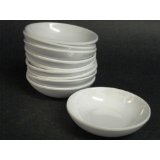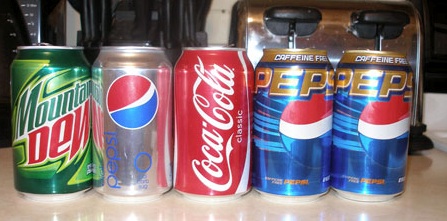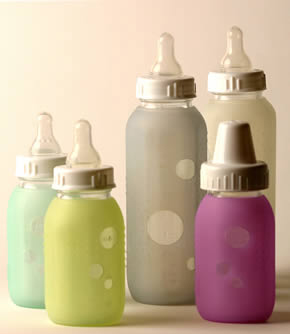
Toxic melamine in dinnerwares
Melamine contains 66% nitrogen by mass and, if mixed with resins, has fire retardant properties due to its release of nitrogen gas when burned or charred, and has several other industrial uses. When melamine is combined, using heat and pressure, with formaldehyde and urea, a polymer known as melamine resin is created. This resin, once all the water it contains is released under pressure, becomes thermoset plastic, which can then be molded and pressed into shapes, including dinnerware.

Melamine is described as being “Harmful if swallowed, inhaled or absorbed through the skin. Chronic exposure may cause cancer or reproductive damage. Eye, skin and respiratory irritant.” However, the short-term lethal dose is on a par with common table salt with an LD50 of more than 3 grams per kilogram of bodyweight. U.S. Food and Drug Administration(FDA) scientists explained that when melamine and cyanuric acid are absorbed into the bloodstream, they concentrate and interact in the urine-filled renal microtubules, then crystallize and form large numbers of round, yellow crystals, which in turn block and damage the renal cells that line the tubes, causing the kidneys to malfunction.
Several toxic chemicals are used in the production of melamine resin, namely formaldehyde and urea. Under the pressure used to create the resin, melamine releases water which must be completely removed. If it is not, it makes the thermoset plastic unstable. This instability can cause the melamine resin to decompose back into its original elements, some of which are toxic.
As a consumer, you could be at risk from synergistic melamine poisoning if you are consuming bread grown with a melamine-based fertilizer that has had a melamine additive to increase the apparent level of protein, served with milk that also had melamine added, on dishware made from melamine resin. The risk exists in combining sources of melamine. One element alone is probably safe; added elements may contribute to synergistic poisoning.
The United Nations’ food standards body, Codex Alimentarius Commission, has set the maximum amount of melamine allowed in powdered infant formula to 1 mg/kg and the amount of the chemical allowed in other foods and animal feed to 2.5 mg/kg.
BPAs in glasswares
Bisphenol A, commonly abbreviated as BPA, is an organic compound with two phenol functional groups. It is used to make polycarbonateplastic and epoxy resins, along with other applications. A 2010 report from the United States Food and Drug Administration (FDA) raised further concerns regarding exposure of fetuses, infants and young children. In September 2010, Canada became the first country to declare BPA as a toxic substance. In the European and Canada BPA use is banned in baby bottles.
It is an endocrine disruptor, which can mimic the body’s own hormones and may lead to negative health effects. Early development appears to be the period of greatest sensitivity to its effects. Regulatory bodies have determined safety levels for humans, but those safety levels are currently being questio ned or under review as a result of new scientific studies.
BPA is a key component of the epoxy liner in canned so it should really be no surprise that new tests at Health Canada found it in pop cans. The chemical is thought to be an endocrine disruptor or “gender bender”, and is now banned in many countries from baby bottles.The levels in pop cans is low, with the highest level found to be 4.5 parts per trillion; you would have to drink 8,000 cans of pop or 900 cans of energy drinks to get to the daily exposure limit set by Health Canada.
BPA can affect growth, reproduction and development in aquatic organisms. Among freshwater organisms, fish appear to be the most sensitive species. Evidence of endocrine-related effects in fish, aquatic invertebrates, amphibians and reptiles has been reported at environmentally relevant exposure levels lower than those required for acute toxicity.
Some animal studies suggest that infants and children may be the most vulnerable to the effects of BPA. Parents and caregivers, can make the personal choice to reduce exposures of their infants and children to BPA:
• Don’t microwave polycarbonate plastic food containers. Polycarbonate is strong and durable, but over time it may break down from over use at high temperatures.
• Polycarbonate containers that contain BPA usually have a #7 on the bottom
• Reduce your use of canned foods.
• When possible, opt for glass, porcelain or stainless steel containers, particularly for hot food or liquids.
• Use baby bottles that are BPA free




